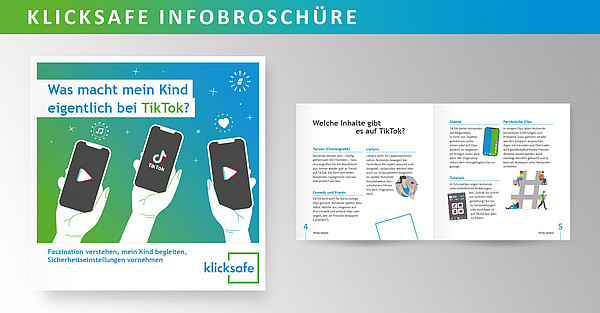Parents watch outTikTok restricts screen time for minors

In the coming weeks, TikTok will automatically set every account of users* under 18 to a daily screen time of 60 minutes.
In addition, new features will be added to the "Guided Mode for Parents": Parents and guardians will be able to individually select settings for daily screen time and mute notifications, among others.
The aforementioned function complements the existing security settings for teenagers' accounts . These are for example, that the accounts of users* aged between 13 and 15 are set to "private" by default and direct messages are only available to users* aged 16 and over.
These technical measures only take effect if the correct age was specified during account registration. An effective age verification by the provider does not take place.
What else should parents pay attention to?
Children and young people come into contact with dangerous content via social media, such as instructions for self-harming behavior, dangerous challenges or glorification of alcohol or drug use.
Address the risks of the platform and educateyour children about them. Address why privacy is important, among other things. Discuss why limiting screen time is helpful. Demonstrate the reporting and blocking features on the platform.
If you allow use, set up the account together. Make sure the age is correct, otherwise the technical security measures won't work. You can manage the security settings in your children's account via the so-called "accompanied mode". But that's not the end of it. There are always ways to get around technical measures and restrictions.
Therefore, always activelyaccompany your children's online experiences in social media services to continuously learn what the child sees and experiences online and how much time he or she actually spends in social media. Offer a trusting basis for discussion for this purpose.

